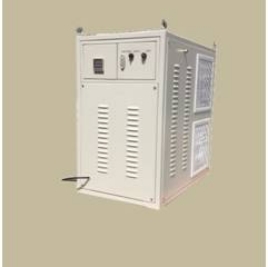
What Is Inert Gas?
Inert gases, such as argon and nitrogen, are elements that do not cause chemical reactions like oxidation with other chemical compounds. This is useful when heating and cooling materials that need to maintain very specific characteristics. Also known as noble gases, inert gases are noncombustible and nontoxic due to their low reactivity. Other inert gases include helium, neon, krypton, xenon and radon.
What Is Inert Gas Technology?
Inert gas technology uses inert gas cooling to control the temperature in high-temperature atmosphere vacuum furnaces. An inert gas self-circulation system uses a specially designed heat exchanger to cool the inert gas to room temperature. It introduces the gas into the heating chamber, causing controlled rapid cooling. After the gas absorbs heat from the products and refractory in the heating chamber, it returns to the heat exchanger to be cooled and then sent back to the heating chamber to absorb more heat. An inert gas circulation system uses the cooled inert gas to provide continuous protection for the products within an atmosphere-controlled furnace while simultaneously allowing faster production rates. A valve controls the gas flow rate.
Order Your Inert Gas Self-Circulation System From Sentro Tech
We specifically designed our STC series of inert gas self-circulation systems to pair with our customized high-temperature atmosphere vacuum furnaces. But our inert gas circulation systems are flexible and can be modified to work with any furnace. You can rely on our inert gas technology to provide the rapid cooling your operation requires. Contact us today to learn more.
Contact Us
The Role of Air Flow in Maintaining Furnace Atmospheres
Inert gases aren't the only tool to help regulate the atmosphere in vacuum furnaces. Controlling the flow of gas is another critical factor in the process. A regular flow of gas will protect the components in the furnace and maintain part quality. Depending on the system, airflow patterns may be horizontal, from the top down or the bottom up. The furnace's design also can affect airflow patterns.
How Air Pressure Affects Furnace Atmospheres
Maintaining air pressure is another crucial element that helps regulate furnace atmospheres and produce parts with the appropriate characteristics. The lack of proper pressure can create the "chimney effect," in which density differences between the furnace atmosphere and the ambient air create buoyancy, leading to unwanted convection currents. Furnaces with controlled atmospheres also require positive air pressure because outside air entering the heating chamber can present dangers.
Combined with the temperature control provided by inert gas technology, airflow and air pressure work together to ensure a favorable furnace atmosphere for the production of parts with specified qualities.
Trust Sentro Tech for Your High-Temperature Atmosphere Vacuum Furnaces
Sentro Tech is a leading manufacturer of high-temperature atmosphere vacuum furnaces. Our models provide outstanding temperature accuracy and uniformity. Working in tandem with our inert gas self-circulation systems, our furnaces consistently deliver the highest quality parts. Contact us today to learn how Sentro Tech equipment can help you achieve your operational goals.
Contact Us



